Pollution Response and Source Tracking in Biscayne Bay
SeaKeepers' Vessel DISCOVERY
Miami, Florida
December 19, 2023
Leadership
Research Team
- Aliza Karim
- Addy Nagle
- Laura Del Mar Cruz
Project Overview
Miami Waterkeeper has initiated a water quality sampling program to opportunistically target potential sources of pollution. They are particularly interested in looking for high levels of pollutants coming out of the stormwater system. Stormwater is the water that washes out into Biscayne Bay from our streets and yards. It can potentially contain nutrients from fertilizers, chemicals from herbicides, bacteria from wastewater, and many other types of pollution. By knowing where these pollutants are coming from, we can better advocate for clean water in our waterways.
Duration of Project
Monthly and ongoing since October 2023
Expedition Summary
On December 19th, Seakeepers took out a science team from Miami Waterkeeper aboard the vessel, DISCOVERY, to evaluate the health of the seagrass beds located near popular recreation sites (near Bear Cut and Stiltsville). The team collected water samples to analyze for nutrients and fecal indicator bacteria. If these parameters are high, it tells us that there is a potential nearby source of pollution. They simultaneously collected a sample of the epiphytes on the seagrass shoots. Epiphytes are the bacteria, algae, and other microorganisms that feed on the nutrients and impede the light availability to the seagrass. We used a quadrat, which is a 0.5-m by 0.5-m square made out of PVC pipe, to take pictures of the amount of epiphytes on the seagrass shoots. If there are high amounts of epiphytes growing on the seagrass, it could indicate that there is a chronic source of pollution in that area.
Miami Waterkeeper is also initiating the use of an aerial drone to allow them to better spot large-scale pollution events, like sediment plumes after heavy rainfall. On this day, however, they used the drone to look at the seagrass coverage in the areas that were being sampled.
Application
Miami Waterkeeper and Department of Health sampling typically occurs from shore on Monday mornings with the latest test results available on Tuesday afternoon. If a site has high bacteria levels, Miami Waterkeeper will re-run the site’s samples again every day and alert the DOH of the pollution source until the issue is resolved.
The Environmental Protection Agency has set the following standards for water considered safe for swimming, which are used by DOH and Miami Waterkeeper:
0-70 CFU/MPN per 100 mL enterococci per sample: Safe for swimming
70+ CFU/MPN per 100 mL enterococci per sample: Not safe for swimming
SeaKeepers aims to assist Miami Waterkeeper in monthly offshore testing to provide the public with updated information on the health and safety of their treasured waterways.
Location
Biscayne Bay, Florida

